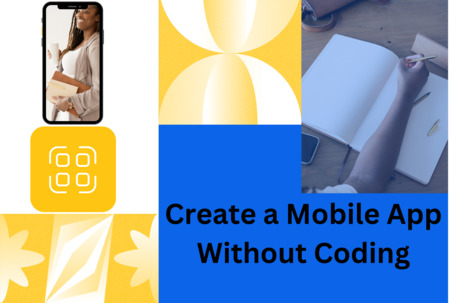How to Create a Mobile App Without Coding
Creating a mobile app without coding may seem like a daunting task, but with the right tools and resources, it’s entirely possible. Here’s a step-by-step guide to help you bring your app idea to life without writing a single line of code:

Step 1: Define Your App Idea
Start by clearly defining your app idea and understanding its purpose and target audience. Consider what problem your app will solve or what value it will provide to users. Conduct market research to identify existing apps in the market and assess their features and user feedback.
Step 2: Choose a No-Code App Builder
Select a no-code app builder platform that suits your needs and technical skills. These platforms offer intuitive drag-and-drop interfaces and pre-built templates to help you create apps without any coding knowledge. Some popular no-code app builders include:
- Appy Pie: Offers a simple drag-and-drop interface and customizable templates for various app categories.
- Thunkable: Allows you to create apps using visual blocks and offers integration with third-party services.
- BuildFire: Provides customizable templates and features for building both iOS and Android apps.
- Adalo: Enables you to design and customize your app’s UI and functionality without coding.
Step 3: Sign Up and Create an Account
Sign up for an account on your chosen no-code app builder platform. Most platforms offer free accounts with limited features, allowing you to explore the platform and build basic apps. Upgrade to a paid plan if you need access to advanced features or want to publish your app to app stores.
Step 4: Choose a Template or Layout
Browse through the available templates or layouts offered by the app builder and choose one that aligns with your app idea. Templates are pre-designed app layouts that you can customize with your own content, images, and branding elements.
Step 5: Customize Your App
Use the app builder’s drag-and-drop interface to customize your app’s layout, design, and features. Add text, images, buttons, and other elements to create the desired functionality and user experience. Customize colors, fonts, and styles to match your branding.
Step 6: Add Features and Functionality
Enhance your app by adding features and functionality that align with your app’s purpose and target audience. Common features include user authentication, push notifications, in-app messaging, social media integration, and e-commerce capabilities. Most no-code app builders offer built-in tools and plugins to add these features without coding.
Step 7: Test Your App
Before publishing your app, thoroughly test it to ensure that all features work as intended and that the user experience is seamless. Test your app on different devices and screen sizes to identify any compatibility issues or bugs. Use the app builder’s preview mode to simulate how your app will look and function on a mobile device.
Step 8: Publish Your App
Once you’re satisfied with your app, it’s time to publish it to app stores. Follow the app builder’s instructions for publishing your app to the Apple App Store and Google Play Store. You’ll need to create developer accounts on these platforms and adhere to their guidelines and requirements for app submission.
Step 9: Promote Your App
After publishing your app, promote it to attract users and increase downloads. Utilize social media, email marketing, app store optimization (ASO), and other marketing channels to reach your target audience. Encourage users to leave reviews and ratings to improve your app’s visibility and credibility.
Step 10: Monitor and Update Your App
Monitor your app’s performance and user feedback regularly to identify areas for improvement and optimization. Use analytics tools to track app usage, user engagement, and conversion metrics. Continuously update your app with new features, bug fixes, and enhancements based on user feedback and market trends.
With these steps, you can create a mobile app without writing any code and bring your app idea to life with ease. Experiment with different features and design elements to create an app that resonates with your audience and delivers value.

